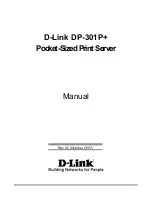
5
Drive initialization and uninitialization
About drive initialization and uninitialization
Before RAID and hot spare drive configuration, some P430 storage controllers require drive
initialization for drives in RAW status.
During initialization, the storage controller draws an area to save RAID configuration. During
uninitialization, the storage controller clears all RAID configuration and places the drives in RAW
status.
Applicable scenarios
Drive initialization is required if you use P430 storage controllers to configure RAID arrays. Drive
uninitialization is required if you want to place the drives in RAW status.
Drive state switching
About drive state switching
You can change the state of drives attached to the storage controller.
PMC storage controllers with RAID capabilities support the following drive states:
•
RAW
—Drives in this state cannot be used to configure RAID arrays but can be identified by
the OS.
•
Ready
—Drives in this state can be used to configure RAID arrays.
•
Optimal
—Drives in this state have been used for configuring RAID arrays and are member
drives of RAID arrays.
LSI storage controllers with RAID capabilities support the following drive states:
•
Unconfigured Good
—Drives in this state are normal and can be used to configure RAID
arrays or hot spare drives.
•
Unconfigured Bad
—Drives in this state are faulty or have RAID information remaining on
them. If a drive is faulty, replace the drive. If RAID information remains on a drive, clear the
RAID information.
•
Hotspare
—Drives in this state act as hot spare drives.
•
JBOD
—Just a Bunch Of Drives. Drives in this state cannot be used to configure RAID arrays.
Applicable scenarios
You can change the state of drives as required.
Drive locating
About drive locating
This feature allows the storage controller to turn the Fault/UID LEDs on the drives to steady blue,
which makes it easier for you to find the locations of the drives.
Summary of Contents for UniServer B5700 G3
Page 35: ...19 Figure 29 Selecting the RAID volume to be deleted...
Page 116: ...56 Figure 96 Controller Configuration screen...
Page 220: ...61 Figure 109 Selecting Main Menu 2 Select Controller Management and press Enter...
Page 243: ...84 Figure 153 Confirming the operation...
Page 293: ...50 Figure 89 Clearing completion...
Page 382: ...21 Figure 27 Storage controller information...
Page 389: ...7 Figure 8 Identifying a storage controller 2...














































